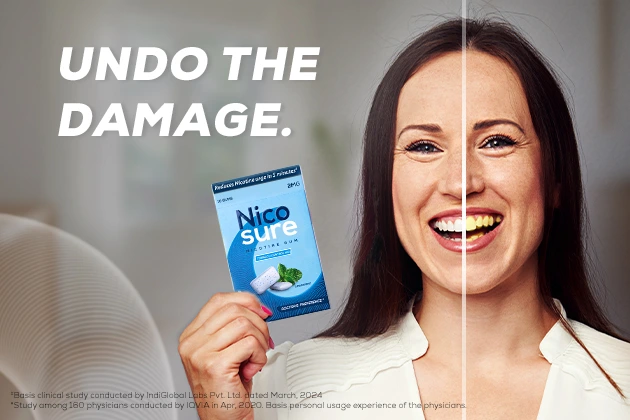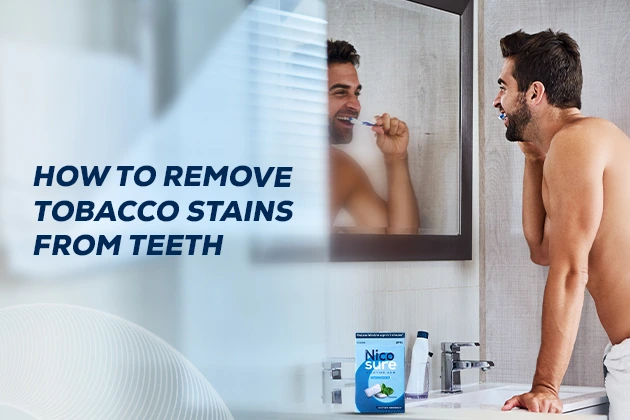Up to 45% OFF + Get an extra 12% OFF. Use Code: DHAMAL12 | Shop Now !
Up to 45% OFF + Get an extra 12% OFF. Use Code: DHAMAL12 | Shop Now !
August 12, 2025 0 Comments
Tobacco use affects more than your lungs. It leaves visible stains on your smile. Tobacco stains on teeth are a common and stubborn side effect of smoking or chewing tobacco. These stains can turn teeth yellow or brown, and regular brushing alone often doesn't help.
This guide explores how to remove smoking stains from teeth, effective home and professional solutions, and daily habits to prevent further discoloration.
When tobacco is consumed, nicotine and tar mix with saliva and bind to tooth enamel. Since enamel is porous, these substances settle into microscopic ridges and grooves, leading to discoloration that becomes harder to remove over time.
Citation: According to the American Dental Association, nicotine and tar in tobacco reduce saliva and discolor tooth enamel by embedding into its surface.
Chewing tobacco creates even more direct and prolonged contact with teeth, which often leads to darker, uneven stains.

Wondering how to remove tobacco stains from teeth at home effectively? While home remedies cannot erase deep stains, they can reduce surface discoloration if used consistently and correctly.
Always consult a dentist before using abrasives regularly. Follow with fluoride toothpaste to protect enamel.
If home methods do not deliver results, professional dental care can help restore your natural tooth color and prevent further damage.
Citation: A 2020 review in the Journal of Esthetic and Restorative Dentistry found professional whitening more effective for smokers than store-bought products when paired with regular hygiene.
Many over-the-counter products are designed to fight tobacco effect on teeth. These can help with mild to moderate staining, especially when tobacco use has stopped or reduced.
Consider starting your oral care plan alongside quitting tobacco. Products like nicotine gums for quitting tobacco help stop further staining while you brighten your teeth.
Prevention works best when paired with consistent hygiene. These habits help slow or stop new stains from forming.

Most importantly, quitting tobacco is the most reliable way to stop stains from returning. Aids like nicotine lozenges can support your quit journey while protecting your teeth.
Nicosure Nicotine Gums and Lozenges are designed to reduce withdrawal symptoms, including nicotine cravings associated with quitting smoking, quitting chewed tobacco, and gutkha containing tobacco.
Some tobacco stains on teeth can be reduced or removed with whitening, polishing, and improved dental care. However, deeper stains that have penetrated enamel or dentin may not go away completely.
Combining professional dental care with a tobacco-free lifestyle gives your smile the best chance of long-term improvement. Products like Nicosure gums and lozenges not only support your health but also prevent new stains from forming.
Nicotine leaves more than just cravings, it stains your smile. While at-home remedies and whitening products can reduce surface stains, long-term users may need dental treatments to see real change. The best first step is to stop further damage by quitting tobacco.
Support your quit journey with nicotine gum or lozenges, and reclaim the brighter, healthier smile you deserve.